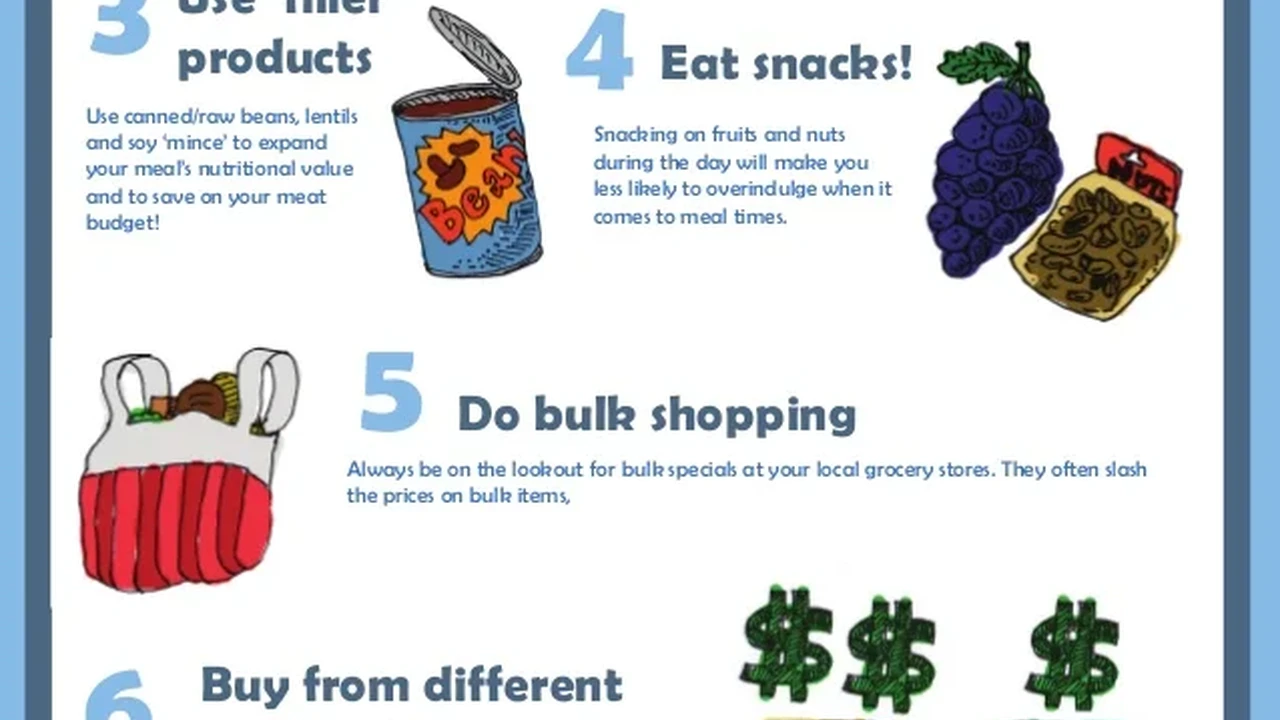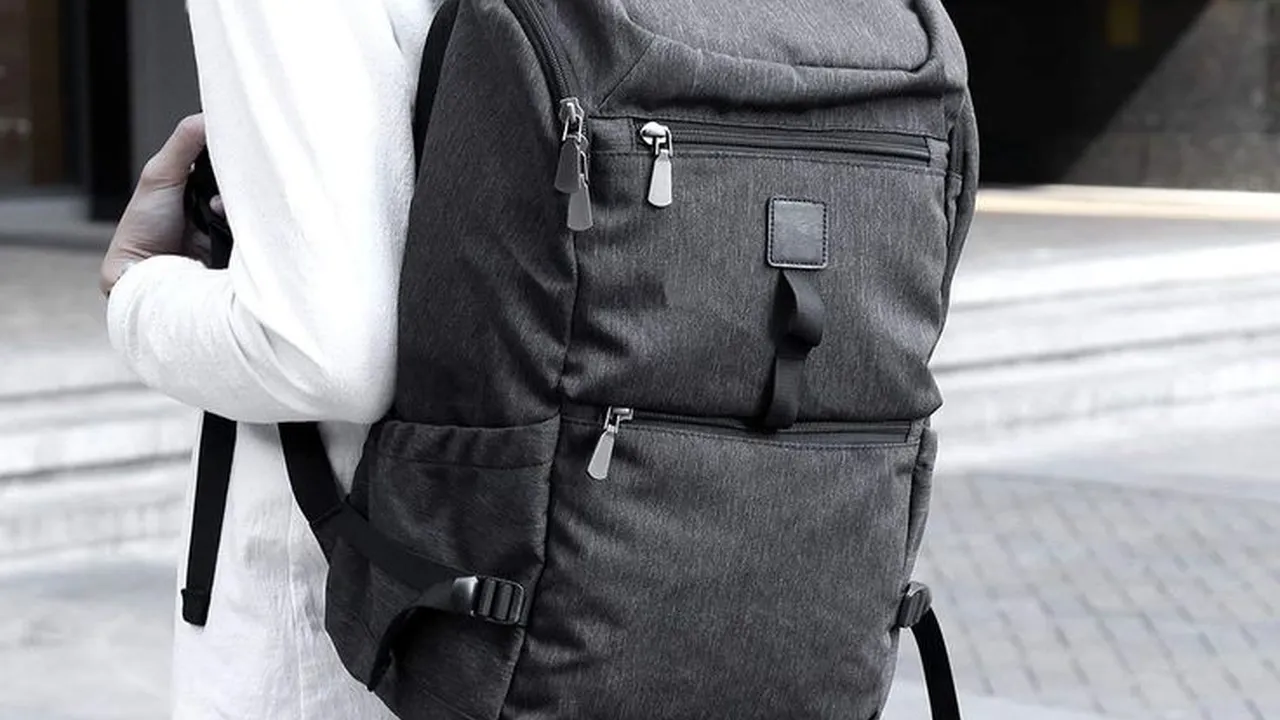5 Tips for Healthy Eating on a Student Budget
Nourish your body with 5 tips for healthy eating on a student budget. Make nutritious choices without overspending.

5 Tips for Healthy Eating on a Student Budget
Hey there, fellow students! Let's be real, college life is a whirlwind of classes, late-night study sessions, and maybe a little too much instant ramen. While it's easy to fall into the trap of cheap, unhealthy eats, fueling your body with nutritious food is super important for keeping your energy up, your brain sharp, and your immune system strong. But how do you eat well when your budget is tighter than your jeans after a holiday feast? Don't sweat it! I've got five practical tips to help you navigate the grocery aisles and your kitchen without breaking the bank or sacrificing your health. We'll also dive into some specific product recommendations, usage scenarios, and even price comparisons to make your healthy eating journey a breeze.
Mastering Meal Planning and Grocery Shopping Strategies for Students
The first and arguably most crucial step to healthy eating on a budget is smart meal planning and strategic grocery shopping. Impulse buys are the enemy of a student budget. Before you even step foot in the supermarket, take some time to plan out your meals for the week. Think about breakfast, lunch, dinner, and even a few healthy snacks. This helps you create a targeted grocery list, ensuring you only buy what you need and reducing food waste.
Creating Your Weekly Meal Plan and Smart Grocery List
Start by checking what you already have in your pantry and fridge. This prevents you from buying duplicates. Then, consider meals that use similar ingredients to minimize waste. For example, if you buy a bag of spinach, plan to use it in a smoothie for breakfast, a salad for lunch, and stir-fry for dinner. Look for recipes that are budget-friendly and can be made in larger batches for leftovers. Think about versatile ingredients like rice, pasta, beans, lentils, and frozen vegetables. These are often cheaper per serving and can be incorporated into countless dishes.
Once your meal plan is set, create a detailed grocery list. Stick to this list religiously when you're at the store. Avoid shopping when you're hungry, as this often leads to unhealthy and expensive impulse purchases. Consider using grocery store apps or online flyers to check for sales and coupons before you go. Many stores offer student discounts too, so always ask!
Embracing Bulk Buying and Smart Storage Solutions for Budget-Conscious Students
Buying in bulk can seem intimidating, especially if you have limited storage space, but it's a fantastic way to save money on staples. Non-perishable items like rice, pasta, oats, dried beans, and canned goods are often significantly cheaper when bought in larger quantities. Even some frozen fruits and vegetables can be more cost-effective in bulk.
Recommended Bulk Buys and Storage Tips for Student Kitchens
- Rice: A 5-pound bag of long-grain white rice can cost around $5-8 and provide dozens of servings. Store it in an airtight container in a cool, dry place.
- Pasta: A large box of spaghetti or penne (around 2-3 pounds) might be $3-5. Again, airtight containers are key.
- Oats: A large container of rolled oats (2-3 pounds) can be $4-7. Perfect for breakfasts and baking.
- Dried Beans/Lentils: A 1-pound bag of dried black beans or lentils is typically $1.50-$3. These are incredibly versatile and packed with protein and fiber. Remember to soak dried beans before cooking!
- Frozen Vegetables: Large bags of mixed vegetables (broccoli, peas, corn, carrots) can be found for $3-6 for 2-3 pounds. They last a long time and are just as nutritious as fresh.
For storage, invest in some good quality, airtight containers. These will keep your bulk items fresh and protect them from pests. If you have a small freezer, consider buying larger packs of meat or poultry when they're on sale and portioning them out into smaller freezer bags for individual meals.
Cooking at Home and Meal Prepping for Busy Student Schedules
Eating out, even at fast-food joints, adds up quickly. Cooking at home is almost always cheaper and healthier. Plus, it gives you full control over the ingredients. Meal prepping takes this a step further, saving you time and preventing you from reaching for unhealthy options when you're tired or stressed.
Essential Kitchen Tools and Meal Prep Containers for Students
You don't need a gourmet kitchen to cook healthy meals. A few essential tools will get you far:
- A good knife and cutting board: Essential for chopping vegetables and proteins.
- One large pot and one large pan: Versatile for soups, stews, pasta, stir-fries, and more.
- Baking sheet: Great for roasting vegetables or making sheet pan dinners.
- Measuring cups and spoons: For accurate recipes.
- A few airtight meal prep containers: Look for glass or BPA-free plastic.
Product Recommendations for Meal Prep Containers:
- Glass Meal Prep Containers (e.g., Pyrex, Glasslock): These are durable, microwave and oven safe, and don't stain or retain odors. A set of 5-10 containers can range from $25-$50. They are a bit heavier but last forever.
- BPA-Free Plastic Meal Prep Containers (e.g., Rubbermaid Brilliance, Bentgo): Lighter and often cheaper, a set might cost $15-$30. Make sure they are microwave and dishwasher safe. They might stain with certain foods like tomato sauce over time.
Usage Scenarios: Prepare a big batch of chili, lentil soup, or chicken and roasted vegetables on Sunday. Portion them into your meal prep containers for easy grab-and-go lunches or dinners throughout the week. This eliminates the need to cook every night and reduces the temptation to order takeout.
Smart Snacking and Hydration for Sustained Student Energy
Snacks are often where budgets and healthy eating go awry. Vending machine treats and convenience store impulse buys are expensive and offer little nutritional value. Planning your snacks and staying hydrated are key to maintaining energy levels and avoiding unhealthy cravings.
Budget-Friendly Healthy Snack Ideas and Hydration Essentials
Instead of processed snacks, opt for whole foods:
- Fruits: Apples, bananas, oranges are cheap and portable. A bag of apples might be $3-5, providing several snacks.
- Vegetables: Carrots, celery sticks, bell pepper strips with hummus (make your own hummus from dried chickpeas for extra savings!).
- Nuts and Seeds: Buy in bulk if possible. A large bag of almonds or peanuts can be $8-15 but lasts a long time.
- Yogurt: Plain Greek yogurt is versatile. Add fruit or a drizzle of honey. A large tub is cheaper than individual cups.
- Hard-boiled eggs: A dozen eggs are usually $2-4 and provide quick, protein-packed snacks.
Hydration: Water is your best friend. It's free and essential for concentration and overall health. Invest in a reusable water bottle and refill it throughout the day. Avoid sugary drinks like sodas and juices, which are expensive and contribute to sugar crashes.
Product Recommendations for Reusable Water Bottles:
- Hydro Flask (or similar insulated bottles like Stanley, Owala): These keep water cold for hours, which is great for long days on campus. Prices range from $30-$50. They are an investment but last for years.
- Nalgene (or similar durable plastic bottles): Simple, lightweight, and virtually indestructible. Prices are typically $10-$15. Easy to clean and carry.
- Basic Stainless Steel Bottles: A good middle ground, often found for $15-$25. They offer some insulation and are more eco-friendly than plastic.
Comparison: Hydro Flask is great for keeping drinks cold all day, perfect for hot climates or if you prefer ice-cold water. Nalgene is fantastic for its durability and light weight, ideal for throwing in a backpack without worrying about dents. Basic stainless steel offers a good balance of features and price.
Utilizing Student Resources and Community Support for Food Access
Don't be afraid to seek out resources specifically designed to help students with food access. Many universities offer programs and support systems that can significantly ease the burden of food costs.
Exploring Campus Food Pantries and Community Gardens
Check if your university has a campus food pantry. These pantries are often stocked with non-perishable items, and sometimes even fresh produce, available to students in need. It's a confidential and valuable resource that many students overlook.
Some universities also have community gardens where students can volunteer and sometimes even take home fresh produce. This is a great way to get fresh, organic food for free and learn about gardening.
Look into local farmers' markets. While some items might seem expensive, many markets offer end-of-day discounts, and you can often find seasonal produce at better prices than supermarkets. Plus, it's a great way to support local farmers.
Finally, consider joining student cooking clubs or groups. Not only can you learn new recipes and cooking techniques, but you might also be able to share ingredients or meals, further reducing individual costs. Eating healthy on a student budget is totally achievable with a little planning, smart shopping, and utilizing the resources around you. Your body and your wallet will thank you!
:max_bytes(150000):strip_icc()/277019-baked-pork-chops-with-cream-of-mushroom-soup-DDMFS-beauty-4x3-BG-7505-5762b731cf30447d9cbbbbbf387beafa.jpg)






